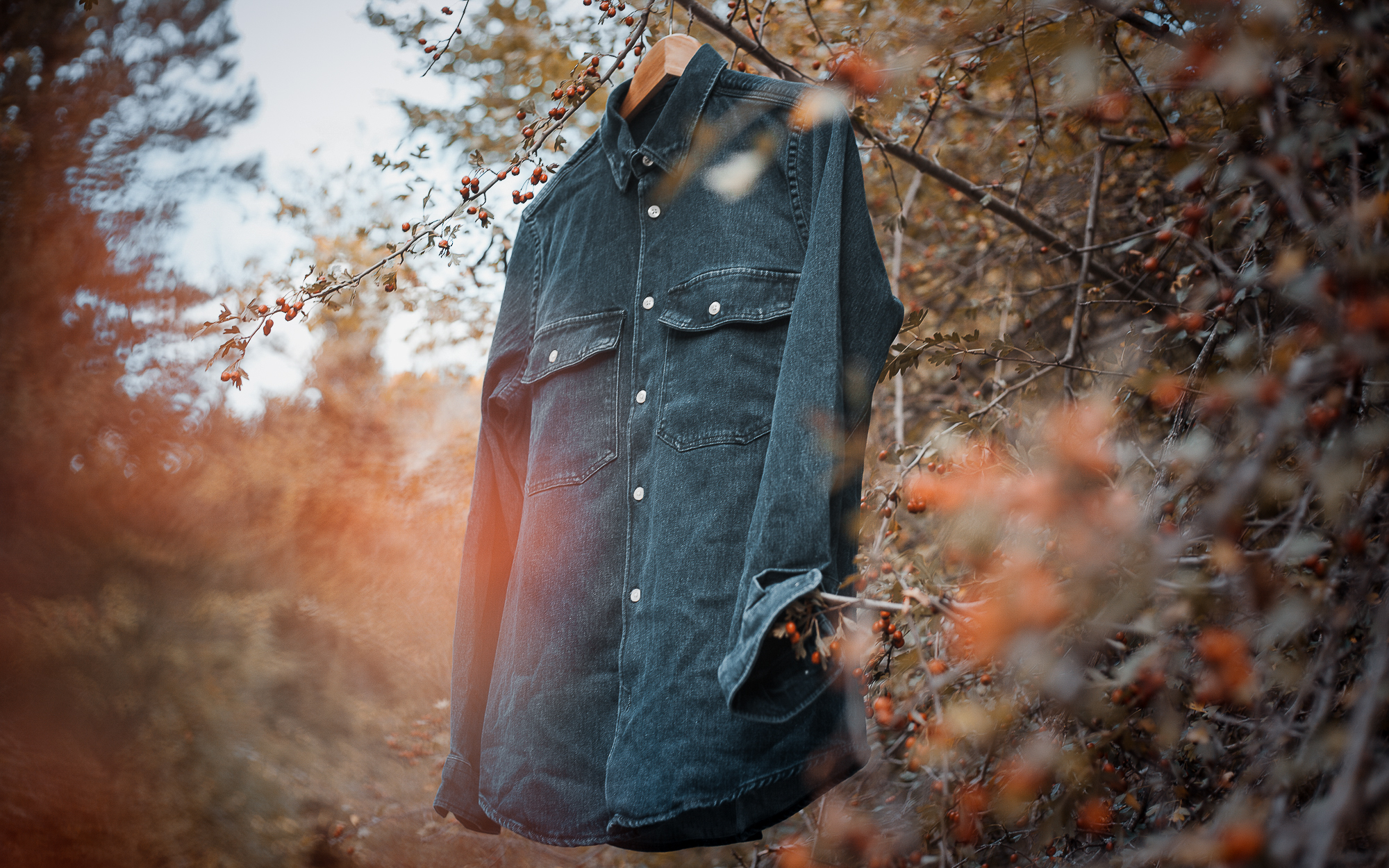The future of fashion is about circularity. Recycling and using recycled fibres lowers the environmental impact of a garment drastically, since there is no water, land and other resources needed for the growing or extracting phase of the fibres. Also, so much has already been made, so why only use new fibres? Nowadays technology creates many new opportunities for giving a second life to fabrics, garments and fibres. We love that we can be a part of this by incorporating different kinds of recycled fibres and consciously thinking about what we put into our pure goods. The past couple of years we’ve been experimenting with denim recycling in many ways and we’re proud that in 2019, more than 56% of our denims contained recycled fibres. In the upcoming years we will increase our focus on denim recycling and investigate how we can keep on lowering our footprint as much as possible. In this article we’d like to share a bit more about denim recycling, different kinds of waste streams and what kind of recycled fibres we use in our pure goods.
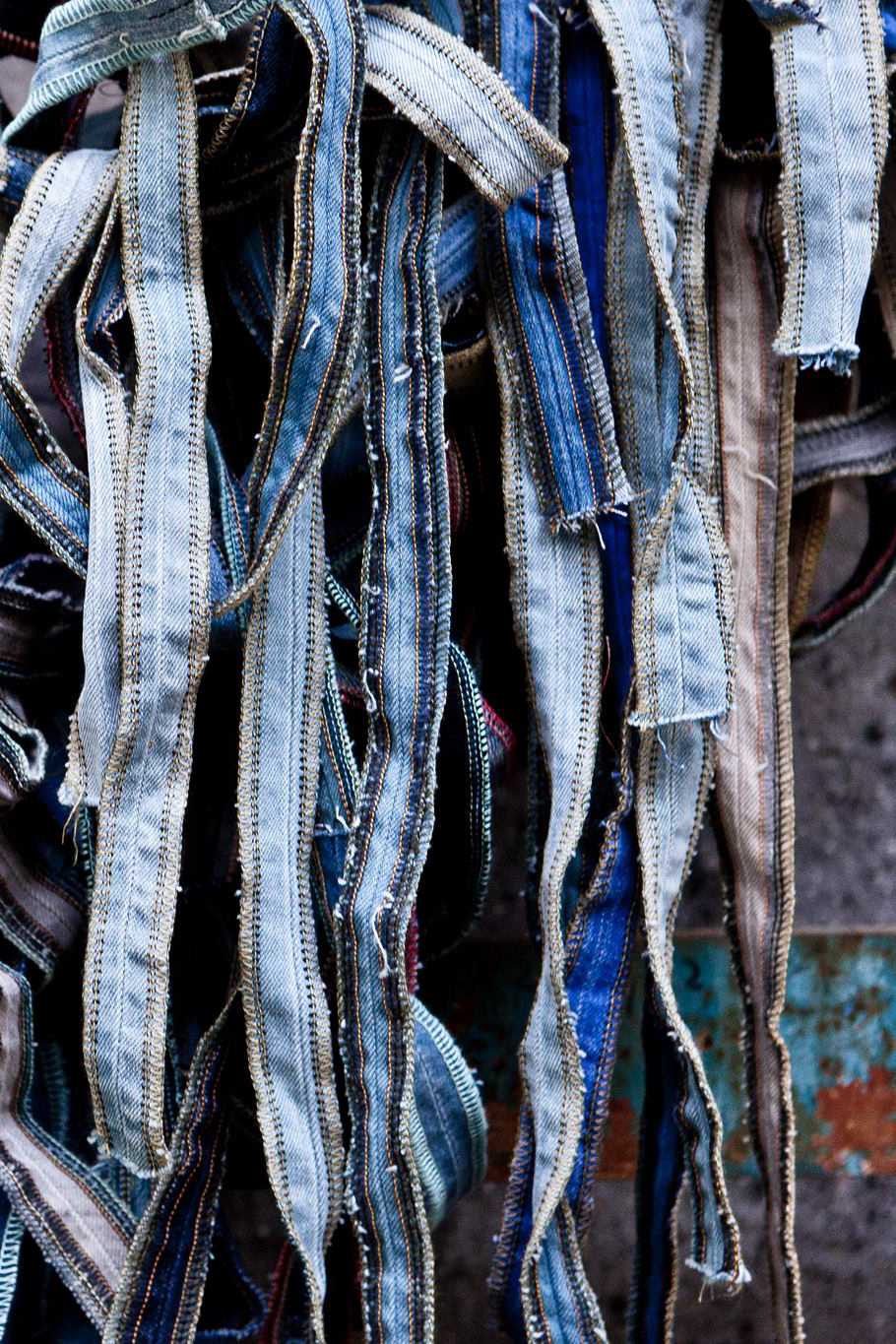
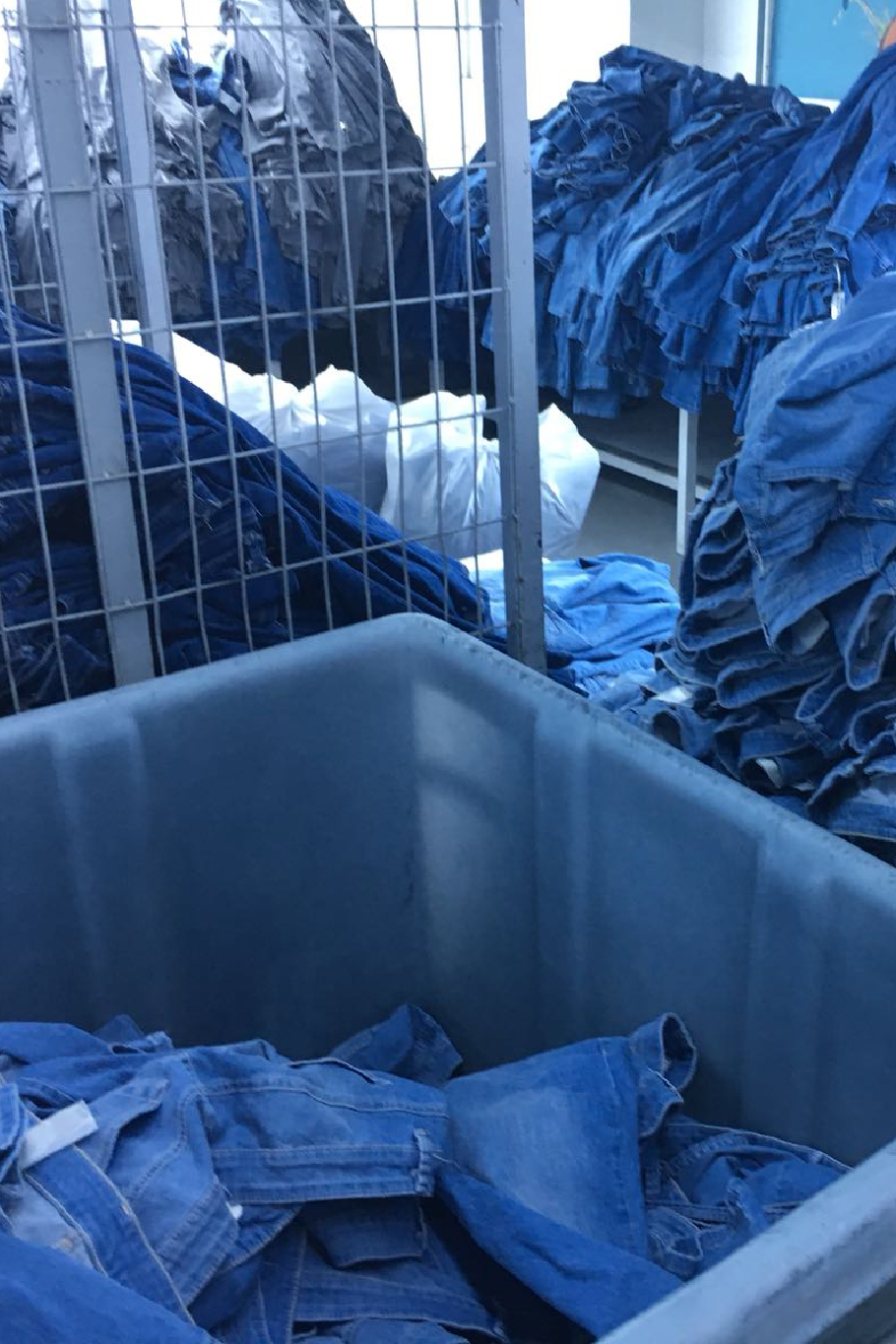
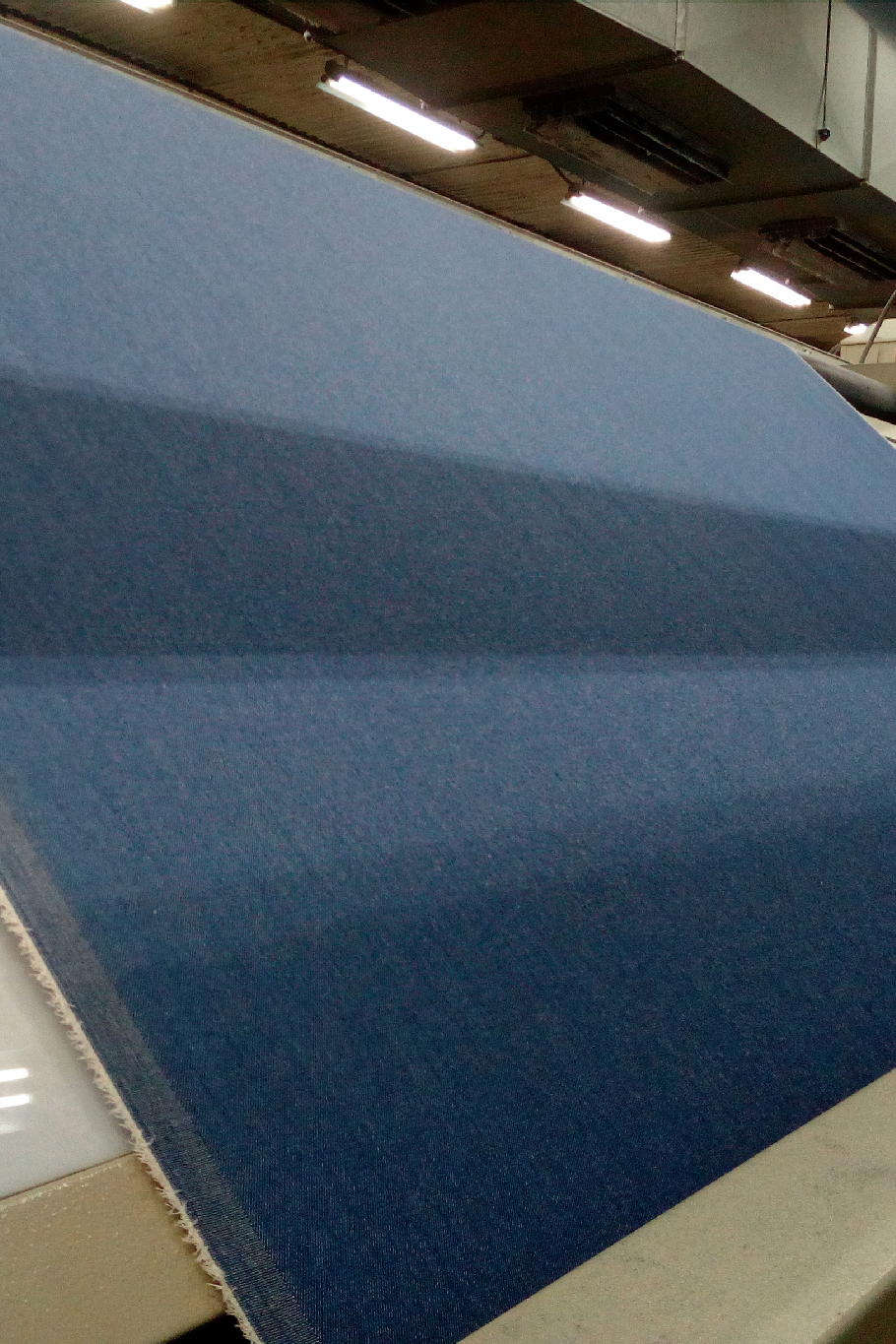
WE WORK WITH DIFFERENT KINDS OF WASTE STREAMS
First, we want to get you familiar with some basic denim recycling knowledge. The number one rule for recycling: ‘The less information you have about what is inside your waste stream, the more challenges it brings to recycle it’. In other words, the further in the production chain you take your waste stream from, the more difficult it will get to recycle. But we happen to love a challenge 🙂
There are three different kinds of waste streams and they all have their own benefits and difficulties:
- Pre-production waste
This is the fabric waste collected from all waste streams in production: fibres from spinning and dyeing, defected or overstock fabric from weaving and scraps from cutting. Benefits are that you know exactly what’s inside of your waste stream (kind of fibres, composition, etc) and it creates better material usage efficiency at a production facility. - Pre-consumer waste
This is a waste stream of garments which have been fully produced but appear to have defects (B choice) or clothes that remain unsold. Benefits are that you have information about what’s inside the waste stream and reusing instead of disposing creates a valuable new resource stream. - Post-consumer waste
These are worn clothes that are disposed and collected. The benefit of this waste stream is that old clothes are given a new purpose instead of being thrown away or burned. The big challenge here is that you have no information about what is in your waste stream. The good thing is that denim is very suitable for recycling since it usually contains a high percentage of virgin cotton.
We use all three kinds of waste streams in our pure goods. Which waste stream we use for a certain pair of Kuyichi jeans depends on the exact kind of fabric and fit we’re looking for and what our suppliers are using and working on.
WE use many natural and some synthetic recycled fibres
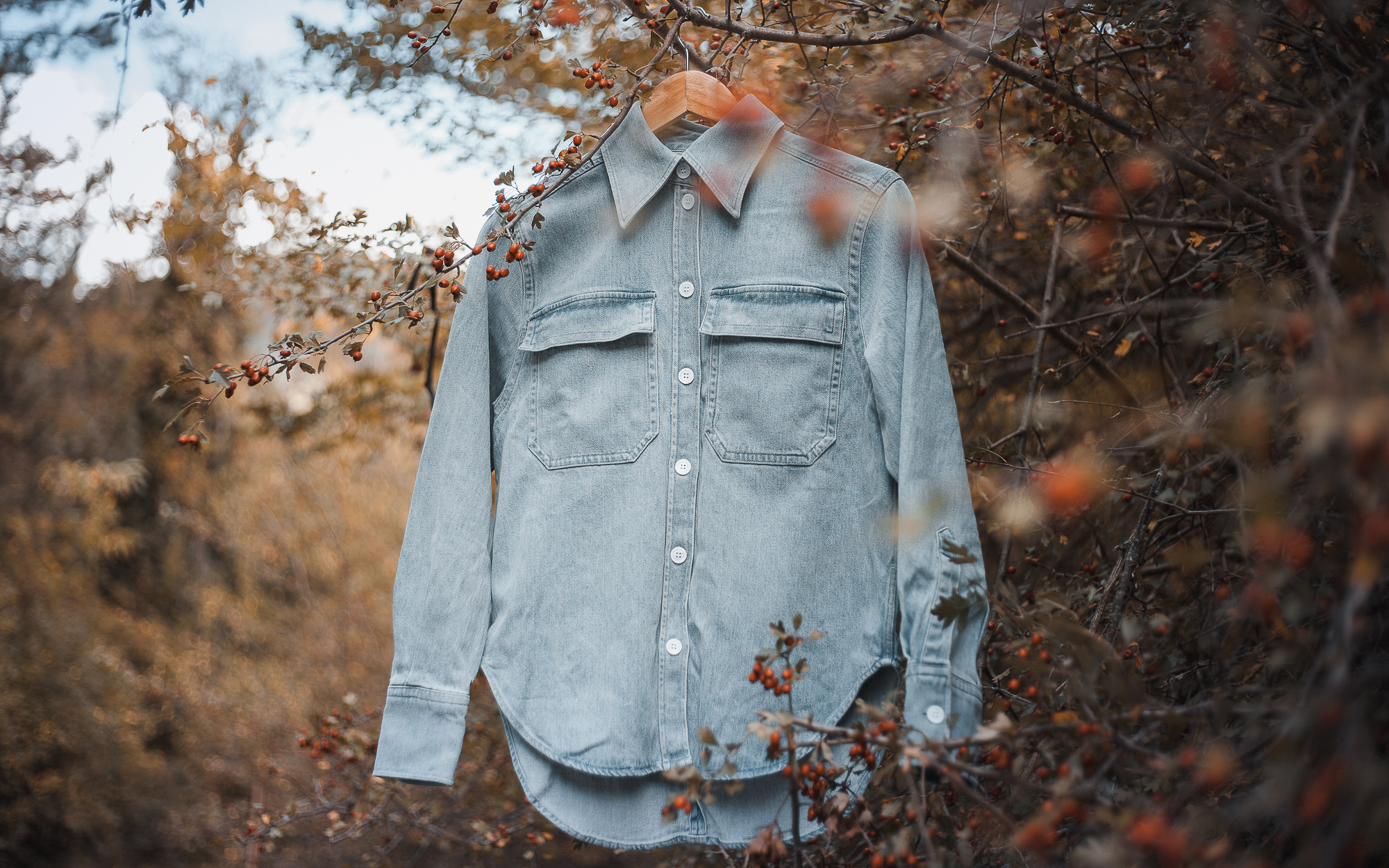
Recycled natural fibres
Recycled cotton
We work a lot with recycled cotton and we’ve been using it in our denim fabrics since 2012. All Kuyichi products stating recycled cotton use cotton fabric and fibres that are wasted in the production process. From fibres captured during the spinning, dyeing and weaving processes, to fabric scraps in the cutting stage. This way we cut down and utulise waste streams in our facilities.
Post-Consumer Recycled Denim
Post-Consumer Recycled Denim (PCRD) means that the fibres being used for new denim, have already been produced, worn and discarded. After cutting off the top of the jeans, the remains are shredded and then blended into new yarns. Using the post-consumer clothing waste stream has several benefits: fewer clothes will end up in landfills and fewer chemicals and water are needed for cotton production and fabric dyeing. This reduces the environmental impact of a garment majorly.
We both use locally collected used denim from Turkey and our own collected denim for our post-consumer recycled denim fabrics. Our denim mill and partner in this is Bossa. Together with them we’ve increased the use of recycled post-consumer fibres in our denim portfolio. Find all pure goods containing Post-Consumer Recycled Denim here.
The Utrechtse Jeans: a special PCRD project
Last year, we launched the Utrechtse Jeans, a special collaboration with one of our retailers, De Rode Winkel (in Utrecht, The Netherlands). Through this collaboration we didn’t only raise more local awareness for denim recycling, it was also a way for us to experience and analyse the post-consumer recycling process from scratch and a good lesson to optimise this process in future collections. Read more about this project on our blog or order your sustainable pair of the Utrechtse Jeans here on the website of De Rode Winkel.
Recycled synthetic fibres
Recycled polyester
To make recycled polyester, plastic bottles are collected, shredded and re-spun. This saves over 75% of the greenhouse gas emissions and more than 90% of the chemicals needed to produce virgin polyester. Furthermore, recycling PET stops plastic from polluting the land and oceans. To confirm the source of the recycled polyester yarn we use the GRS (Global Recycling Standard) certificate on fabrics with recycled polyester in it. Check out all denims containing recycled polyester here.
We were also the first denim brand using Ecoverde sewing threads (by Coats) in our jeans, made from recycled polyester. In 2020, all denim sewing threads will be converted into Ecoverde threads.
T400 ECOMADE
T400 ecomade is an innovation fibre from Lycra. It’s composed from one part recycled PET polyester, one part plant- based polymers and one part virgin polyester, adding up to 65% being recycled or renewable. Most stretch fibres react to the tension on the fibre, but T400 ecomade works on body warmth. The biggest benefit of T400 ecomade is the recovery, it turns back to its original shape after cooling down, creating a lasting fit of your denim. No loose saggy stretch fabric guaranteed! Check out all denims containing T400 ECOMADE here.
We’re currently working on a new circular business model in collaboration with Circle Economy and we’re planning on launching it in 2021. Stay tuned! More information about how we’ve been working on our sustainable practices in the past year?
Read our sustainability report 2019 here




